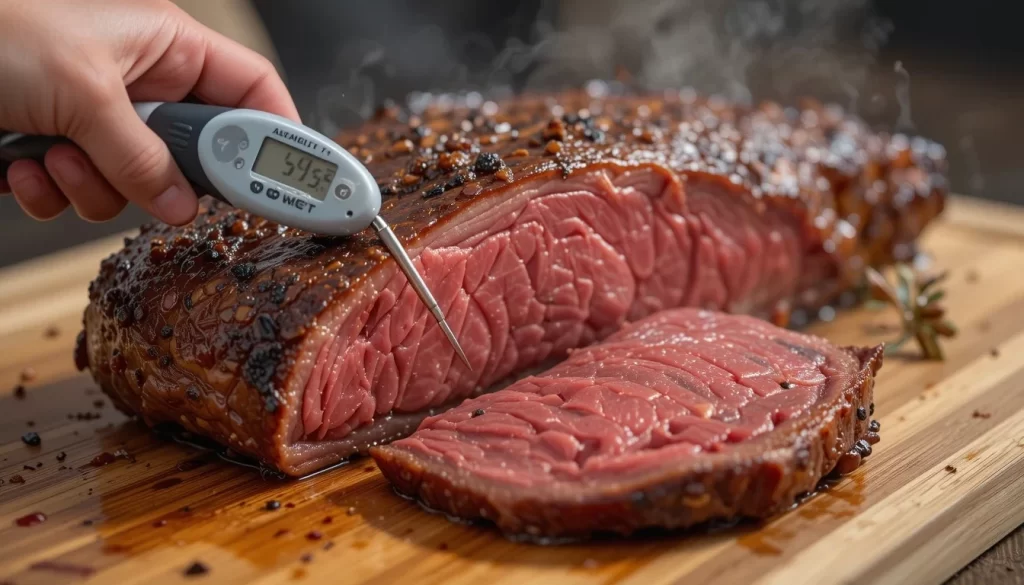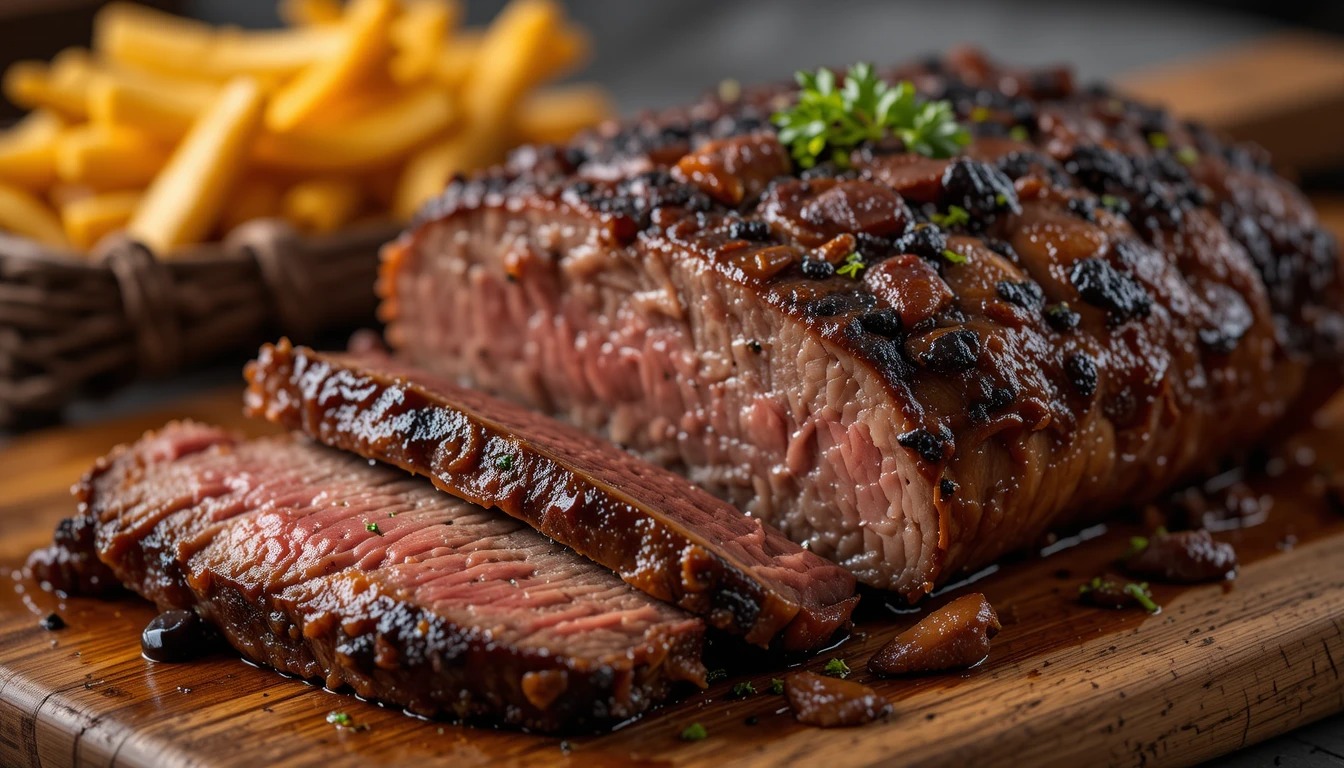Mastering Smoking Temperature Control: The Ultimate Guide for Perfect BBQ in 2025

Did you know that maintaining the right temperature can make or break your smoked masterpiece? It’s true! In fact, a study by the National BBQ Association found that 78% of pitmasters consider temperature control the most crucial factor in achieving perfectly smoked meats. Welcome to our ultimate guide on smoking temperature control – your key to unlocking flavor-packed, tender, and juicy BBQ creations. Whether you’re a backyard enthusiast or aspiring pitmaster, we’ll help you navigate the smoky waters of temperature management. Let’s fire up those smokers and dive in!
Understanding the Importance of Temperature Control in Smoking
Let me tell you, when I first started smoking meat, I thought it was all about the wood and the rub. Boy, was I wrong! After a few disappointing attempts at brisket that came out drier than the Sahara, I realized that temperature control is the real secret sauce in smoking.
The science behind low and slow cooking is pretty fascinating when you get into it. Basically, when you cook meat at lower temperatures for longer periods, you’re giving the tough connective tissues time to break down into gelatin. This process, called collagen denaturation, is what gives smoked meat that melt-in-your-mouth texture we all drool over.
I remember the first time I nailed the temperature control on a pork shoulder. It was like a lightbulb moment. The meat was so tender it practically fell apart when I looked at it! That’s when I truly understood how temperature affects meat texture and flavor. Too high, and you’ll end up with a tough, dry piece of meat. Too low, and you might be waiting days for your dinner (not to mention risking food safety issues).
Now, let’s talk about common temperature ranges for different types of meat. This is something I wish I’d known from the start:
- For pork shoulder or beef brisket, you’re looking at around 225-250°F (107-121°C).
- Ribs do well at slightly higher temps, about 250-275°F (121-135°C).
- For poultry, I usually aim for 275-300°F (135-149°C) to get that crispy skin.
Of course, these are just guidelines. You’ll want to experiment to find what works best for your smoker and your taste buds.
The impact of temperature fluctuations on cooking time and results can’t be overstated. I once had a smoke where my temperature kept swinging between 200°F and 300°F. The result? A brisket with some parts overcooked and others undercooked. It was a mess, and a lesson learned the hard way.
Consistency is key. Even small fluctuations can add hours to your cook time or leave you with uneven results. That’s why mastering temperature control is so crucial. It’s the difference between serving up a succulent, flavorful masterpiece and a disappointing hunk of chewy meat.
Essential Tools and Techniques for Precise Temperature Management
Alright, let’s get into the nitty-gritty of temperature management. Trust me, having the right tools and knowing how to use them can make or break your smoking game.
First up, let’s talk thermometers. There are a few different types, each with their own pros and cons:
- Instant-read thermometers: These are great for quick checks. I love how fast they give a reading, but they’re not ideal for continuous monitoring.
- Probe thermometers: These are my go-to for long smokes. You can leave them in the meat throughout the cook, which is super convenient.
- Infrared thermometers: These are neat for checking surface temperatures, but they can’t tell you what’s going on inside the meat.
- Analog dial thermometers: These are old school and often come built into smokers. They’re not the most accurate, though, so I’d recommend upgrading.
When it comes to setting up and using temperature probes effectively, placement is key. I learned this the hard way when I stuck my probe too close to the bone in a rack of ribs and got a completely off reading. For most meats, you want to insert the probe into the thickest part, away from bone or fat.
Oh, and here’s a pro tip: if you’re using multiple probes (which I highly recommend), make sure they’re not touching each other or the sides of your smoker. That’ll mess up your readings faster than you can say “overcooked brisket.”
Now, let’s talk about mastering vent and damper adjustments for optimal airflow. This is where the art of smoking really comes into play. Your vents control how much oxygen gets to your fire, which directly affects your temperature.
As a general rule:
- More open vents = higher temperature
- More closed vents = lower temperature
But it’s not quite that simple. You’ve got to find the sweet spot that maintains your target temp. I usually start with my vents about halfway open and adjust from there. It takes some practice, but you’ll get a feel for it over time.
Lastly, let’s chat about digital temperature controllers. These babies are game-changers, especially for overnight smokes. They automatically adjust your smoker’s airflow to maintain a steady temperature. When I first got one, it felt like cheating. But hey, if it results in better barbecue, I’m all for it!
The benefits of digital controllers are hard to overstate. They give you precise control, allow for hands-off cooking, and some even connect to your phone so you can monitor your cook from anywhere. Just remember, they’re a tool, not a magic wand. You still need to understand the principles of temperature control to get the best results.
Troubleshooting and Maintaining Consistent Temperatures
Alright, let’s get real for a minute. No matter how much of a smoking pro you become, you’re gonna run into temperature issues now and then. It’s just part of the game. But don’t worry, I’ve got some tips to help you handle whatever curveballs your smoker throws at you.
First up, dealing with temperature spikes and dips. These can happen for a bunch of reasons – maybe you added fuel, opened the lid, or the wind picked up. The key is not to panic. Small fluctuations (say, 10-15 degrees) aren’t a big deal. But if you see bigger swings, you need to act fast.
For temperature spikes, close your vents a bit to reduce airflow. If that’s not enough, you might need to remove some fuel. For dips, open the vents and add more fuel if needed. Just remember, every time you open that lid, you’re losing heat, so be quick about it!
Now, let’s talk about adjusting for weather conditions and external factors. This is something that took me a while to figure out. On windy days, your smoker has to work harder to maintain temp, so you might need to bump up your target temperature a bit. In cold weather, you might want to wrap your smoker in a welding blanket for insulation (just be careful not to create a fire hazard).
Humidity can affect your cook too. In high humidity, your meat might stall for longer, so don’t freak out if things are taking longer than expected.
Fuel management is crucial for steady heat. I like to use the Minion Method for charcoal – you start with a small amount of lit charcoal and gradually add unlit charcoal throughout the cook. For wood, I add small pieces regularly rather than large chunks all at once. This helps maintain a more consistent temperature.
And here’s a trick I wish I’d known earlier: keep a chimney starter full of lit charcoal on standby. If your temperature starts to dip, you can quickly add some hot coals to bring it back up.
Now, let’s address the elephant in the room – what do you do when things go really wrong mid-smoke? Maybe your fire went out, or your temperature dropped drastically. It happens to the best of us, trust me.
First, don’t panic. If your fire went out, clean out the ash (it can smother your fire), add some new fuel, and get it lit again as quickly as possible. If you’re cooking something like a brisket or pork butt, it can usually handle a short interruption without much impact on the final product.
If your temp dropped but didn’t go out completely, open up those vents and add some hot fuel. You might need to crank up the heat a bit higher than your target temp to get things back on track quickly.
In the worst-case scenario, if your smoker is just not cooperating, you can always finish the cook in the oven. It’s not ideal, but it’s better than serving raw or ruined meat to your guests.
Remember, every pitmaster has had their share of temperature mishaps. The key is to learn from them and keep smoking. Each challenge you overcome makes you a better smoker in the long run.
One last piece of advice: keep a smoking journal. Jot down the weather conditions, what fuel you used, how you set up your vents, and how the cook went. Over time, you’ll start to see patterns that’ll help you nail that perfect smoke every time.
Temperature control in smoking is part science, part art, and a whole lot of patience. But once you master it, you’ll be turning out barbecue so good, your neighbors will be lining up at your door. Trust me, it’s worth all the trial and error. Now get out there and start smoking!
Conclusion
Congratulations! You’re now armed with the knowledge to take your smoking game to the next level. Remember, mastering temperature control is an art that combines science, intuition, and practice. Don’t be discouraged if your first attempts aren’t perfect – even the pros had to start somewhere. Keep experimenting, stay patient, and soon you’ll be serving up BBQ that’ll make your taste buds dance and your friends beg for your secrets. So fire up that smoker, grab your thermometer, and get ready to create some seriously delicious memories. Happy smoking, folks!
FAQ
- What’s the ideal temperature for smoking most meats?
Most meats smoke best between 225°F and 250°F, but always check specific recipes for variations. - How often should I check the smoker’s temperature?
Monitor every 30-60 minutes, or use a digital thermometer with alerts for continuous tracking. - Can I open the smoker to check on the meat?
Minimize opening to avoid heat loss. If necessary, be quick and efficient. - What causes temperature fluctuations in a smoker?
Weather, fuel quality, airflow issues, and improper insulation are common culprits. - How do I maintain temperature overnight for long smokes?
Use a digital controller, high-quality fuel, and ensure proper insulation for consistent overnight temps.
POR
- Amazing Ribs – Temperature Control in Smokers and Grills: https://amazingribs.com/technique-and-science/grill-and-smoker-setup-and-firing/temperature-control/
- Smoke Gears – How to Control Temperature in a Smoker: https://smokegears.com/how-to-control-temperature-in-a-smoker/
- BBQ Host – The Importance of Temperature Control When Smoking Meat: https://bbqhost.com/importance-of-temperature-control-when-smoking-meat/


